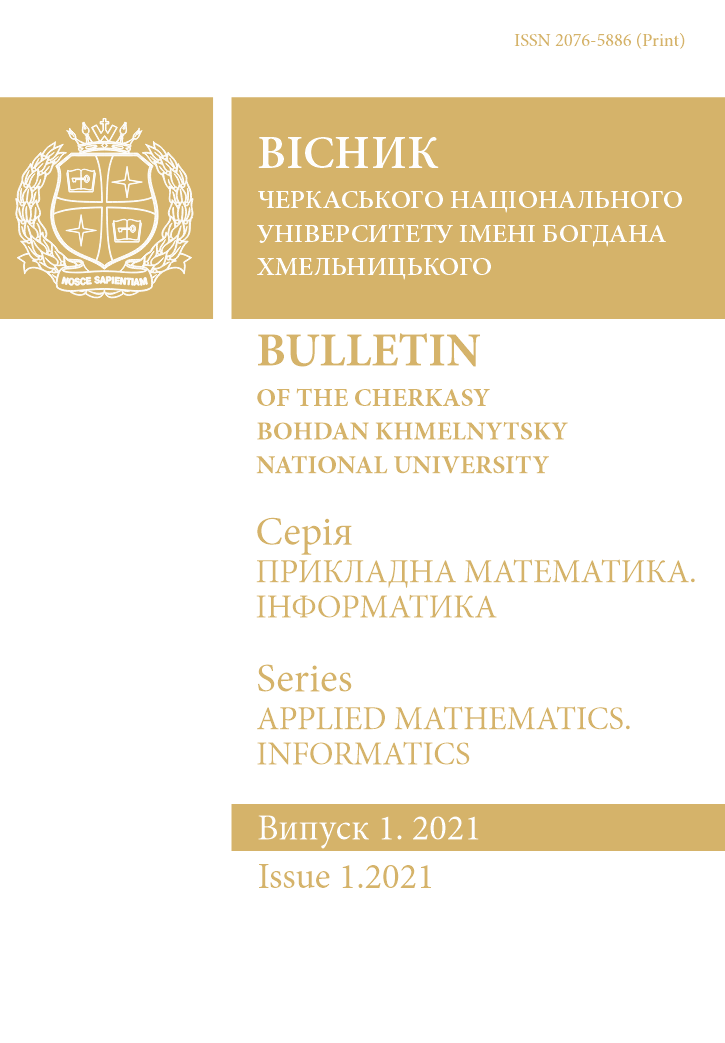APPLICATION OF INTEGRAL NUMBERING TOOLS FOR SOLVING PROBLEMS OF GEOMETRIC AND MECHANICAL CONTENT FROM MATHEMATICAL ANALYSIS
Main Article Content
Abstract
Introduction. Mathematical analysis has powerful tools, especially in integral calculus, for solving a number of problems for application in geometry and mechanics. However, it is difficult for students to memorize a large number of complex mathematical formulas. In this article we propose to carry out a step-by-step mastering of mathematical formulas and give a number of tasks that can be used. The task is designed for visual perception and assimilation, as the semiotic component of learning qualitatively helps mechanical memorization and facilitates the application of the studied material to solve practical problems. This approach is aimed not only at memorizing the basic mathematical formulas for integral calculation of functions of one or more variables and using them to calculate the lengths of curves, areas, volumes, masses, moments of inertia and static moments, etc., but also the formation of students' ability to and consistently think, analyze, compare, summarize, etc., in general, the ability to draw the right conclusions and make realistic predictions, to apply the acquired knowledge, skills and abilities to solve various practical problems. However, the specifics of the organization of the study of mathematical analysis taking into account the peculiarities of the content of education specialties 104 "Physics and Astronomy", 105 "Applied Physics and Nanomaterials", 113 "Applied Mathematics", 126 "Information Systems and Technologies" is still not considered carefully enough and remains at the center of our research.
Purpose – consider the features of the semiotic component of teaching mathematical analysis, in particular integral calculus and take them into account when teaching students specialties such as 104 "Physics and Astronomy", 105 "Applied Physics and Nanomaterials", 113 "Applied Mathematics", 126 "Information Systems and Technologies", formulate appropriate recommendations.
Originality. In this article, taking into account the latest trends in educational policy and the specifics of training in specialties 104 "Physics and Astronomy", 105 "Applied Physics and Nanomaterials", 113 "Applied Mathematics", 126 "Information Systems and Technologies", namely - the trend towards algorithmization when solving certain practical problems, it is advisable to use visualization in the study of mathematical analysis by the above students – and during the assimilation of theoretical material, and when solving problems. We have identified three stages of mastering mathematical formulas and proposed a number of exercises.
Conclusion. We see further research in the development of the same system of tasks for each topic of mathematical analysis, taking into account the specifics of training future professionals in the above specialties.
Article Details
References
Жалдак М. І. Математичний аналіз з елементами інформаційних технологій: навчальний посібник / М. І. Жалдак, Г. О. Михалін, С. Я. Деканов. – К. : Редакції газет природничо-математичного циклу, 2012. – 128 с.
Клочко В. І. Формування знань майбутніх інженерів з інформаційних технологій розв’язування диференціальних рівнянь : монографія / В. І. Клочко, З. В. Бондаренко. – Вінниця : ВНТУ, 2010. – 216 с.
Кондратьєва О. М. Методична система контролю і коригування знань та умінь студентів технічних спеціальностей у процесі навчання вищої математики : автореф. дис... канд. пед. наук : 13.00.02 – теорія та методика навчання математики / Оксана Марківна Кондратьєва ; Нац. пед. ун-т ім. М. П. Драгоманова. – К., 2007. – 20 с
Крилова Т. В. Наукові основи навчання математики студентів нематематичних спеціальностей (на базі металургійних, енергетичних і електромеханічних спеціальностей вищого закладу технічної освіти) : автореф. дис... д-ра пед. наук: 13.00.02; Нац. пед. ун-т ім. М. П. Драгоманова. – К., 1999. – 36 с.
Потапова О. М. Аналіз дослідження труднощів студентів технічних спеціальностей при вивченні математичного аналізу / О. М. Потапова // Вісник Черкаського університету. Серія Педагогічні науки. – № 12 (265). – Черкаси, 2013. – С. 83–90.
Сердюк З. О., Христенко Т. М. Математичний тезаурус як інтелектуальний засіб навчання студентів фізичних спеціальностей ВНЗ. Засоби і технології сучасного навчального середовища // Матеріали всеукраїнської науково-практичної конференції (20 – 21 травня 2011 року, м. Кіровоград). – С. 78–79.
Сердюк З. О. Особливості вивчення навчальної дисципліни «Математичний аналіз» для студентів фізичних спеціальностей ВНЗ / З. О. Сердюк // Актуальні проблеми і перспективи дидактики фізики // Матеріали Всеукраїнської науково-практичної конференції (26 – 28 квітня 2012 року, м. Черкаси). – Черкаси, ЧНУ ім. Б. Хмельницького. – С. 51–52.
Сердюк З. О. Реалізація компетентнісного підходу під час вивчення курсу математичного аналізу в ВНЗ. – Вісник Черкаського університету, Випуск № 8 (341): серія «Педагогічні науки». – Черкаси: Вид. від. ЧНУ ім. Б. Хмель¬ницького, 2015. – С. 101-106.
Тарасенкова Н. А., Сердюк З. О. Особливості викладання курсу математичного аналізу для фахівців з аналізу даних. Вісник Черкаського університету. Серія “Прикладна математика. Інформатика”. 2020. № 1. Черкаси : Вид. від. ЧНУ ім. Б.Хмельницького. С. 57-73. Published: Mar 18, 2021. DOI 10.31651/2076-5886-2020-1-77-86
Тарасенкова Н. А. Використання знаково-символічних засобів у навчанні математики : [монографія] / Н. А. Тарасенкова. – Черкаси : Відлуння-плюс, 2002. – 400 с.

